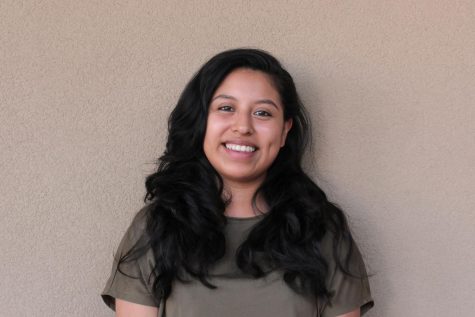Some Call for Expanded DSPS Services
GCC students with disabilities tell El Vaquero they want more support
Kenya Ruiz / Staff Photographer
In this file photo, a student receives tutoring help. (Kenya Ruiz, Staff Photographer)
“Thirty people are consistently shoved in there like a pack of sardines,” said David Callejas, a Glendale Community College student with visual processing speed, a condition that makes it harder for individuals to form judgements about a visual stimulus. Callejas, registered with GCC’s Disabled Students Programs and Services (DSPS), is referring to the study area for disabled students.
Although DSPS seeks to promote student equity and outcomes, students who need the most help say they often don’t get enough it. An El Vaquero investigative report found that issues stem not from neglect on the part of staff, but from funding that often leaves students wanting and needing more than the campus can provide. Some positive changes, however, are on the horizon.
To put it into perspective, funding for GCC’s DSPS was $1,832,176 in 2008-09. Since then, funding for the program has dropped and has yet to fully restore. So, 10 years later, the program has to try to provide the same level of support at the same funding level of a decade before.
“Our funding comes from two places,” explained Tina Anderson Wahlberg, DSPS director. “We get some funding from the state and it’s based on the number of students that we serve and the types of disabilities of the people that we have. It’s a weighted student count.” That means that the state does its own study to estimate the cost for what it takes to provide reasonable accommodations for students with varying of disabilities. “For example, if a student has a hearing impairment and they need a sign language interpreter, that’s very expensive,” explained Anderson-Wahlberg. “The funding weight given to students with hearing impairment is much higher, whereas for someone who might have a back injury, what those folks usually would need is a tram to help them navigate campus in a timely manner.”
There are currently 798 enrolled students with disabilities on campus, according to Edward Karpp, the Dean of Research at GCC. These students have a variety of impairments that range from hearing issues to acquired brain injury to autism and ADHD. All students are different, so understanding and addressing their needs can help them on academic and personal levels. Yet the accommodations will vary widely from student to student based on their disability.
Currently, tutoring services to students with disabilities aren’t readily available due to only two available tutors. El Vaquero found that these employees have a job description that tasks them with clerical duties and running the reception board, which can significantly cut the time spent with students who need help.
“They have only two [tutors] for 30 students who go get tutoring,” said Callejas, who suggested students require far more than they are currently getting. “They are all doing the best they can with what they are given, but they are going to war with no swords.”
Several DSPS students contacted for this story complained over a lack of tutors.
“We need that special care and a nice working environment where they can work one-on-one with us,” said Sarah Burgos, a student with ADHD. “If I am stuck on a question and [a tutor] is helping all these other students and also having to do the clerical duties, it takes longer to get help.”
Even when students do end up getting facetime with tutors, they often feel disappointed because the center does not offer tutoring in subjects other than English and math. This pushes students with disabilities to go to the school learning center, where fellow students are the ones to teach various subjects. Even then, information often does not get across, as these tutors, no matter how great, are not trained in pedagogy that specifically targets high-needs students.
“They need other tutors who know other subjects,” said Chris, who asked to be identified only by his first name. “The material is kind of hard, but if someone can teach it in a way that we can understand it, especially with our disability, everything is possible.” Chris explained that he has a head injury and ADHD, which makes processing information different for him.
“In the instructional assistant center we have two tutors who help students with English and math, [and] we get alot of demand for math,” said Anderson-Wahlberg, who expressed that it would be great to expand programming but tutoring in too-specific coursework wouldn’t be possible on a permanent basis as students don’t always require tutoring for such specific coursework.
However, Anderson-Wahlberg said her department working on expanding their staff count.
“I am happy to report that just last week, we interviewed people to get temporary help,” she said in a late November interview. “We have a person who has accepted the temporary position.” Hopefully, by the summer, she said, the position will be filled a full-time permanent one.
Capacity is another issue cited by at least six students who spoke with El Vaquero.
“What we’re finding is that especially during peak times, like at midterms and finals, some students still need tutoring, but then we have so many other students taking test that the space doesn’t work,” acknowledged Anderson-Wahlberg. “What we’re doing is planning to combine the two centers, the High Tech Center and Instructional Assistant Center.” She explained that it will all be in the same room, but distributed in terms of space.
DSPS conveyed to El Vaquero that it hopes to get the input of students. “What we would like to do is [have] focus groups,” she said, explaining that invites may be sent to students in the spring. “We’re very interested in [students’] perspectives because they use our services and they may have ideas that we haven’t thought of.”


